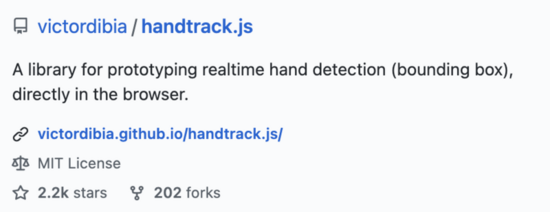1,父传子
子组件中定义props字段,类型为数组(如果需要限制字段值类型,也可以定义为对象的形式)。如下图的例子,父组件挂载子组件HelloWorld,在组件标签上给title赋值,子组件HelloWorld定义props,里面有一个值是title,这样子组件就可以使用父组件的值了。
父组件
<template>
<div>
<HelloWorld :title="msg" />
</div>
</template>
<script>
import HelloWorld from "../components/HelloWorld.vue";
export default {
name: "Home",
data() {
return {
msg: "搜索音乐",
};
},
components: {
HelloWorld,
},
};
</script>
子组件
<template>
<div class="hello">
<h1>{{ title }}</h1>
</div>
</template>
<script>
export default {
name: "HelloWorld",
props:["title"],
data() {
return {};
},
};
</script>
2,子传父
子传父,需要在子组件中触发一个事件,在事件中,调用$emit('父组件的方法名', '传递的值'),然后在父组件中,通过自定义事件接收传递过来的值。
子组件
<template>
<div class="hello">
<h1 @click="add">{{ title }}</h1>
</div>
</template>
<script>
export default {
name: "HelloWorld",
props: ["title"],
data() {
return {
age:18
};
},
methods: {
add(){
this.$emit("childEvent", this.age);
}
},
};
</script>
父组件
<template>
<div>
<HelloWorld @childEvent="parentEvent" :title="msg" />
</div>
</template>
<script>
import HelloWorld from "../components/HelloWorld.vue";
export default {
name: "Home",
data() {
return {
msg: "搜索音乐",
};
},
methods: {
parentEvent(e) {
console.log(e);
},
},
components: {
HelloWorld,
},
};
</script>
3,兄弟组件传值
1,先新建一个bus.js文件,在bus.js里new一个Vue实例,充当传输数据的中间层。
import Vue from 'vue'; export default new Vue;
2,在组件A中引入bus.js,通过bus.$emit('事件名','参数')传递参数
<template>
<div class="hello">
<h1 @click="add">{{ title }}</h1>
</div>
</template>
<script>
import bus from "../publicFn/bus.js";
export default {
name: "HelloWorld",
props: ["title"],
data() {
return {
age:18
};
},
methods: {
add(){
bus.$emit("childEvent", this.age);
}
},
};
</script>
3,在B组件mounted周期中使用$on('事件名', function(){})接收
<template>
<div id='swiper'>
<button>我是按钮</button>
</div>
</template>
<script>
import bus from "../publicFn/bus.js";
export default {
name:'Swiper',
data (){
return {
}
},
mounted(){
bus.$on("childEvent", (e) => {
console.log(e)
})
}
}
</script>
4,父组件使用子组件的数据和方法
1,在子组件标签上写上ref属性
2,父组件通过this.$refs.id.方法名或者this.$refs.id.属性名的方式可以访问子组件。
父组件
<template>
<div>
<HelloWorld :title="msg" ref="hello" />
<button @click="parentEvent">我是父亲</button>
</div>
</template>
<script>
import HelloWorld from "../components/HelloWorld.vue";
export default {
name: "Home",
data() {
return {
msg: "搜索音乐",
};
},
methods: {
parentEvent() {
this.$refs.hello.add();
console.log(this.$refs.hello.age);
},
},
components: {
HelloWorld
},
};
</script>
子组件
<template>
<div class="hello">
<h1>{{ title }}</h1>
</div>
</template>
<script>
export default {
name: "HelloWorld",
props: ["title"],
data() {
return {
age:18
};
},
methods: {
add(){
console.log("我是子组件");
}
},
};
</script>
5,子组件使用父组件的数据和方法
在子组件中,可以使用$parent访问其上级父组件的数据和方法,如果是多重嵌套,也可以使用多层$parent。
父组件
<template>
<div>
<HelloWorld :title="msg" ref="hello" />
</div>
</template>
<script>
import HelloWorld from "../components/HelloWorld.vue";
export default {
name: "Home",
data() {
return {
msg: "搜索音乐",
};
},
methods: {
parentEvent() {
console.log("我是父组件的方法");
},
},
components: {
HelloWorld
},
};
</script>
子组件
<template>
<div class="hello">
<h1 @click="add">{{ title }}</h1>
</div>
</template>
<script>
export default {
name: "HelloWorld",
props: ["title"],
data() {
return {
age:18
};
},
methods: {
add(){
console.log(this.$parent.msg)
this.$parent.parentEvent();
}
},
};
</script>
6,Vuex传值
Vuex 是一个专为 Vue.js 应用程序开发的状态管理模式。它采用集中式存储管理应用的所有组件的状态,并以相应的规则保证状态以一种可预测的方式发生变化。一般小项目不需要用到。
6.1,定义store
import Vue from "vue";
import Vuex from "vuex";
Vue.use(Vuex);
export default new Vuex.Store({
state: {
school: "清华大学",
a:"nice"
},
getters: {
returnVal(state) {
return state.school + state.a;
},
},
mutations: {
changeSchool(state, val) {
state.school = val;
console.log('修改成功');
},
},
actions: {},
modules: {}
});
6.2,挂载
import Vue from 'vue';
import App from './App.vue';
import router from "./router";
import store from "./store";
import ElementUI from "element-ui";
import "element-ui/lib/theme-chalk/index.css";
import publicFn from "./publicFn/publicFn";
Vue.config.productionTip = false
const url = process.env.VUE_APP_URL;
Vue.prototype.$url = url;
Vue.prototype.$publicFn = publicFn;
Vue.use(ElementUI);
new Vue({
router,
store,
render: h => h(App),
}).$mount('#app')
6.3,使用
<template>
<div class="hello">
<h1 @click="add">{{ title }}</h1>
</div>
</template>
<script>
export default {
name: "HelloWorld",
props: ["title"],
data() {
return {
age:18
};
},
methods: {
add(){
console.log(this.$store.state.school);//获取值
//this.$store.commit('changeSchool', '北京大学');//修改值
// console.log(this.$store.getters.returnVal)//获取过滤后的值
}
},
};
</script>
7,路由传值
7.1 通过query传值
注意:该方式刷新页面参数不丢失,并且会在地址栏后将参数显露,http://localhost:9000/#/conter?id=10086&name=%E9%B9%8F%E5%A4%9A%E5%A4%9A
页面A
<template>
<div>
<HelloWorld :title="msg" ref="hello" />
<button @click="parentEvent">跳转</button>
</div>
</template>
<script>
import HelloWorld from "../components/HelloWorld.vue";
export default {
name: "Home",
data() {
return {
msg: "搜索音乐",
};
},
methods: {
parentEvent() {
this.$router.push({
path:"/conter",
name:'conter',
query:{
id:10086,
name:"鹏多多"
}
})
},
},
components: {
HelloWorld
},
};
</script>
页面B
<template>
<div id='conter'>
</div>
</template>
<script>
export default {
name:'conter',
data (){
return {
}
},
created (){
console.log(this.$route.query.id, this.$route.query.name);
},
}
</script>
7.2 通过params传值
注意:该方式刷新页面参数会丢失,可以接收后存在sessionStorage。
A页面
<template>
<div>
<HelloWorld :title="msg" ref="hello" />
<button @click="parentEvent">跳转</button>
</div>
</template>
<script>
import HelloWorld from "../components/HelloWorld.vue";
export default {
name: "Home",
data() {
return {
msg: "搜索音乐",
};
},
methods: {
parentEvent() {
this.$router.push({
path:"/conter",
name:"conter",
params:{
id:10086,
name:"鹏多多"
}
})
},
},
components: {
HelloWorld
},
};
</script>
B页面
<template>
<div id='conter'>
</div>
</template>
<script>
export default {
name:'conter',
data (){
return {
}
},
created (){
console.log(this.$route.params.id, this.$route.params.name);
},
}
</script>
到此这篇关于Vue的七种传值方式的文章就介绍到这了,更多相关Vue传值方式内容请搜索NICE源码以前的文章或继续浏览下面的相关文章希望大家以后多多支持NICE源码!










